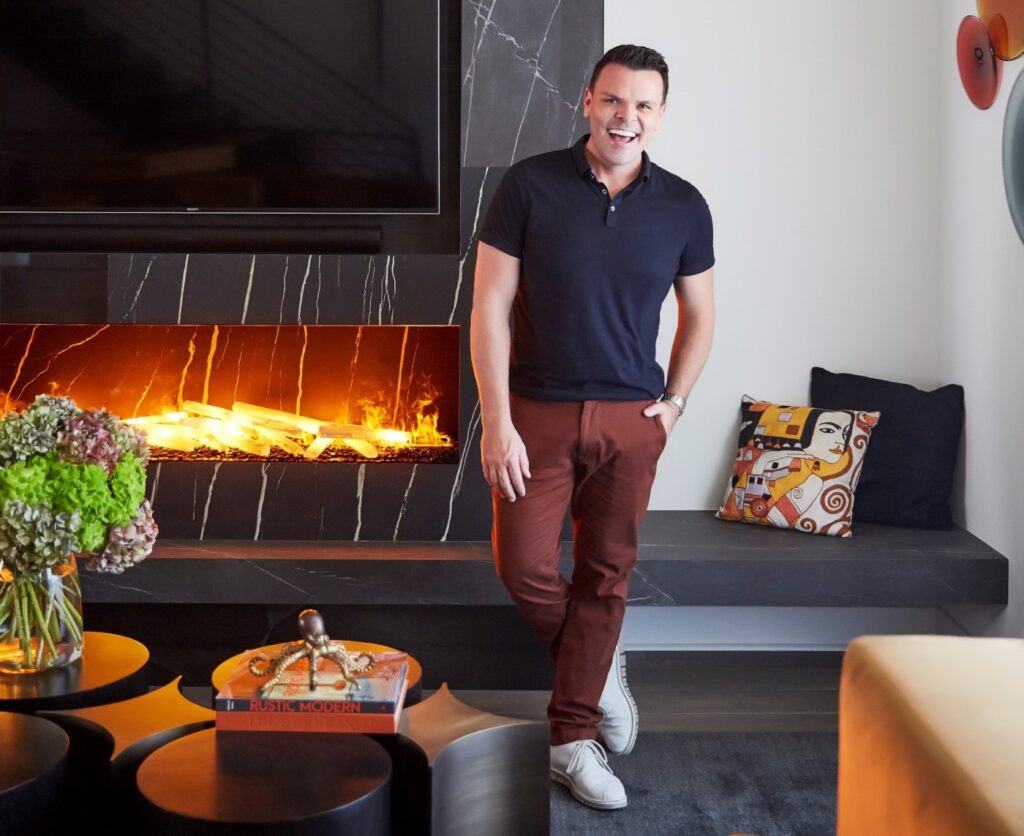
In his new book, “The Designer Within: A Professional Guide to a Well-Styled Home,” interior designer John McClain suggests we ask ourselves, “What would make me the happiest when I walk into my home?”
Reviewing an advance copy (Gibbs-Smith, $45), I have to agree. That might be THE question.
What would make me the happiest? Coming home to people and pets dear to me, of course, in a place that’s clean and orderly — and pretty. I want to see objects and vignettes I love, pieces my husband and I have collected over time that tell stories.
“I want readers – whether homeowners about to embark on their first renovation or seasoned design professionals looking for new ideas – to come away feeling confident and inspired,” he writes.
Readers will want to give their whole home a makeover after looking through this inspiring 114-page tome, illustrated with photos of McClain’s own home, a “Modern Loft Bungalow,” and his other design projects, which range from traditional to contemporary.
“I did not want this to be just another pretty coffee table book,” McClain told me over the phone from his home in Los Angeles. “What I really want this book to do is to start a conversation, a discussion inside your own household that sparks change.”
I was eager to hear more.
Q. Every designer, including you, says to gather inspirational images from magazines or on a Pinterest board to form the foundation of your design. How do you go from that hodgepodge to a design plan?
A. You’re looking for inspiration. When you find something you respond to positively, whether a photo of a room, a rug or a piece of art or furniture, dig deeper. Analyze why you love it. Is it because it reminds you of a favorite place, or makes you feel comfortable and relaxed. The items in your home need to awaken something in you. They need to be more than just pretty.
Q. You tell readers to “be bold.” That’s loaded advice. Please advise.
A. I am over people copying what they see in Crate & Barrel or Restoration Hardware. Homeowners need to express themselves. My favorite way to be bold is through wallpaper, but it can also be through a statement piece of furniture, maybe an oversized light fixture that acts like a sculpture or through unexpected color.
Q. Your book features a lot of painted cabinets, but the idea of painting wood cabinets terrifies me. Isn’t that sacrilegious?
A. Now I’m going to raise you a who cares. Wood is just wood. People say they cannot change this golden oak, and I say, “Are you kidding me?” Wood cabinets are no more special than painted cabinets. Although, when painting cabinets, do choose colors that will stand the test of time.
Q. Share your secrets for creating a great “shelfie” or tablescape.
A. When styling a bookshelf or coffee table, must-haves include stacks of books with some sort of “book topper,” such as a brass object or any small accent piece on top of the stack to punctuate the table. Then add one to two objects with height and a round object, like a bowl. Mix sizes, shapes, colors, and finishes.
Q. You advocate for home design that is “comfortably chic.” How do you bridge those opposite ideas?
A.Chic and comfortable is my go-to design aesthetic. You can choose a chic sofa with gorgeous, sophisticated lines and cover it in fabric so durable that the kids can wipe their dirty hands on it. Overstuff it, so it is more comfortable than you’d expect, while keeping the same sleek silhouette.
Q. What are some ways to make a small space look larger?
A.Use chairs and sofas with legs that allow airspace. Clear acrylic chairs take up less visual space, and drapes that start at the ceiling will make rooms feel taller. Don’t be afraid to use large pieces in small rooms. A few larger pieces are better than several smaller ones. A monochromatic color scheme also helps.
Q. You talk about a high-low philosophy when discussing how to afford a great look. Where are the best places to save money and where should you invest?
A. Spend money on the items that get heavy use: sofas, coffee tables, dining chairs, beds, appliances and case goods, such as dressers. Save on items you use less, like lamps, mirrors, accessories, side tables, sometimes area rugs and art. Even when I’m working on a multimillion-dollar home, I will put an expensive well-made dining table alongside a $50 mirror.
Marni Jameson has written six home and lifestyle books, including “Downsizing the Blended Home – When Two Households Become One.” Reach her at www.marnijameson.com.
